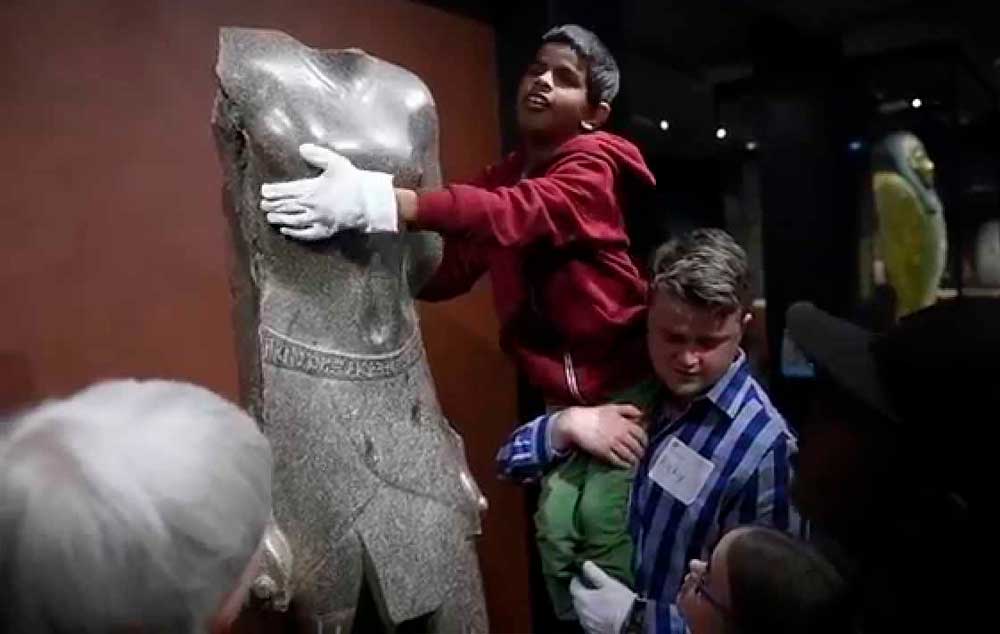
Photographer Interview: Experiencing Art through Touch
The Metropolitan Museum has a long history of making its collections accessible to blind and partially sighted visitors through touch and description. In the 1970s, the Museum established the Touch Collection, a group of small artworks from different curatorial departments, for the purpose of tactile exploration by blind and partially sighted visitors. Since 1998, these visitors have been invited to engage with a range of Museum objects through touch tours—guided or self-guided visits in which they can explore specific objects with their hands. For several years, photographer Matt Ducklo has captured participants on these tours at the Metropolitan and other museums, creating a body of work that explores how all people—both sighted and otherwise—experience art. I interviewed Matt about his work and how it has affected his own experience of looking at art.
Jennette Mullaney: What attracted you to this subject?
Matt Ducklo: I am interested in seeing and looking, particularly the way in which looking at art can feel like heightened looking. When I visit a gallery or museum, I occasionally have moments that produce some sort of emotional or intellectual response, but a lot of times I just register work with my eyes and move on. With the photographs of touch tours, I am representing the appearance of an interior experience.
Matt Ducklo (American, b. 1973). Statue of Herakles seated on a rock, Imperial,1st or 2nd century A.D. Roman; adaptation of a Greek statue of the late 4th or early 3rd century B.C., Metropolitan Museum of Art, 2008. Chromogenic print; 50 x 40 in.
Jennette Mullaney: You photograph not only a work of art and a visitor’s interaction with that work of art, but the very act of experiencing art in a way that is foreign to most of us. How do you capture that experience?
Matt Ducklo: The thing is that I don’t know what the experience is like. I photograph what it looks like, but I guess that the impossibility of knowing is what’s interesting.
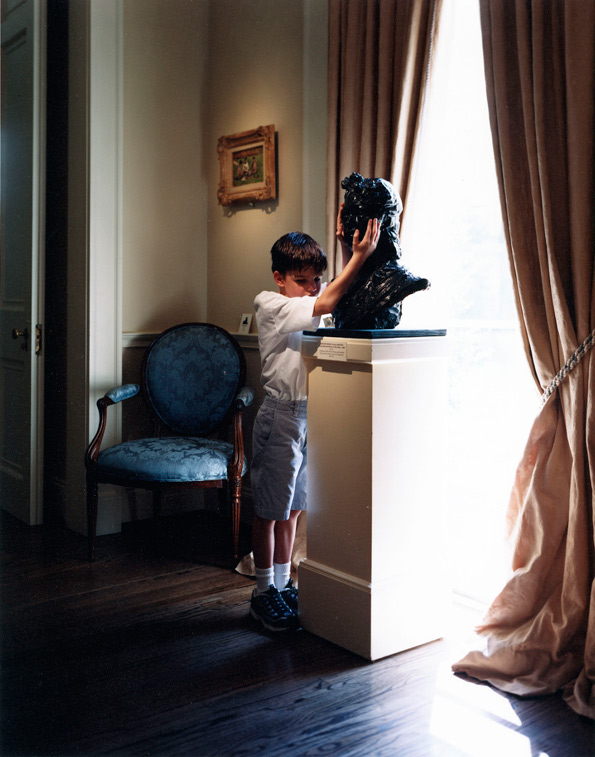 Matt Ducklo (American, b. 1973). Young Girl with Flowers in Her Hair, 1865–70, The Dixon Gallery and Gardens, 2008. Chromogenic print; 50 x 40 in
Matt Ducklo (American, b. 1973). Young Girl with Flowers in Her Hair, 1865–70, The Dixon Gallery and Gardens, 2008. Chromogenic print; 50 x 40 in
Jennette Mullaney: Have these projects affected how you observe art when visiting a museum?
Matt Ducklo: I suppose I sometimes pay more attention to the surface of a work now, but it’s not as if every time I look at a work of art I think about what it must feel like. I guess I think more about how I might be misunderstanding the work and probably spend a little more time with each piece.
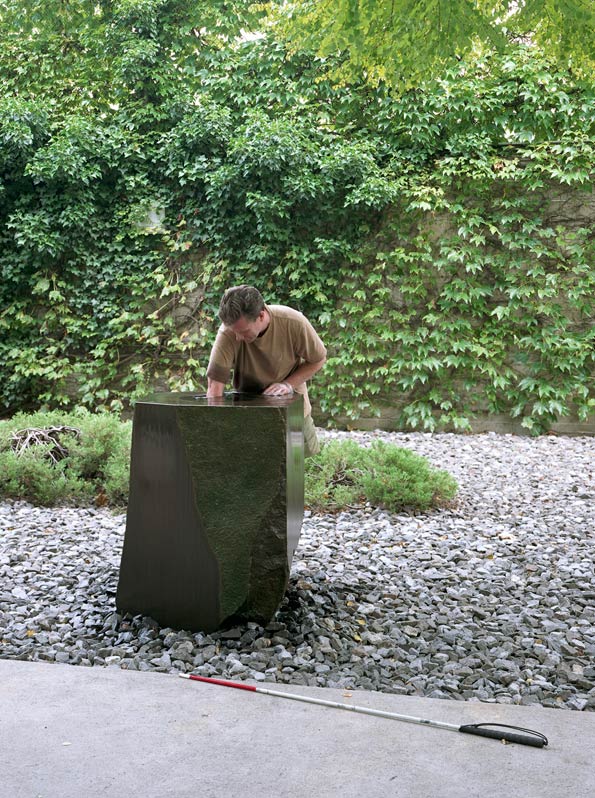 Matt Ducklo (American, b. 1973). The Well (Variation on a Tsukubai), 1982, The Noguchi Museum, 2009. Chromogenic print; 50 x 40 in.
Matt Ducklo (American, b. 1973). The Well (Variation on a Tsukubai), 1982, The Noguchi Museum, 2009. Chromogenic print; 50 x 40 in.
Jennette Mullaney: Would you mind sharing some of the insights you’ve gained working with visually impaired visitors?
Matt Ducklo: Art is important, and many people with visual impairments want as much access to art as possible. Most of the people I have photographed find that experiencing art through touch is meaningful. I do believe that touching can function as something like seeing.
Source: Metropolitan Museum of Art
Compartilhe
Use os ícones flutuantes na borda lateral esquerda desta página
Siga-nos!
Envolva-se em nosso conteúdo, seus comentários são bem-vindos!
Artigos relacionados
Teleton AACD. A pessoa com deficiência como protagonista.
Teleton AACD. A pessoa com deficiência como protagonista. Uma iniciativa internacional abraçada pelo SBT no Brasil.
Acessibilidade no ESG. Equipotel aborda o tema para o turismo.
Acessibilidade no ESG, para o mercado do turismo. Equipotel aborda a importância da inclusão da pessoa com deficiência.
Morte Sobre Rodas. Filme inclusivo foi candidato ao Oscar.
Morte Sobre Rodas. Dois protagonistas do filme, são pessoas com deficiência, um usuário de cadeira de rodas e outro com paralisia cerebral.

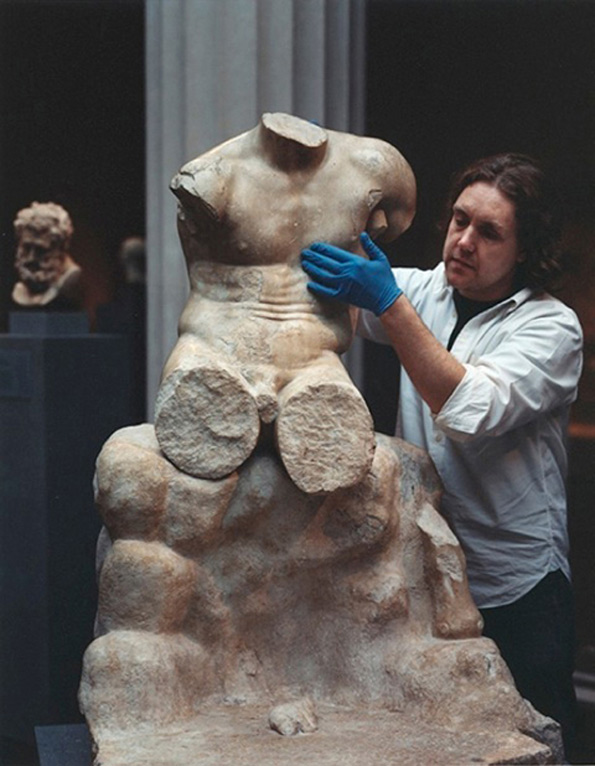




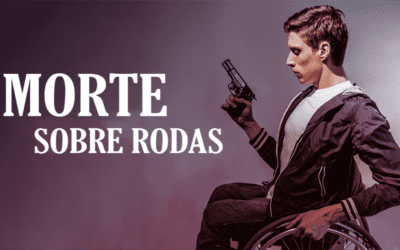
0 comentários